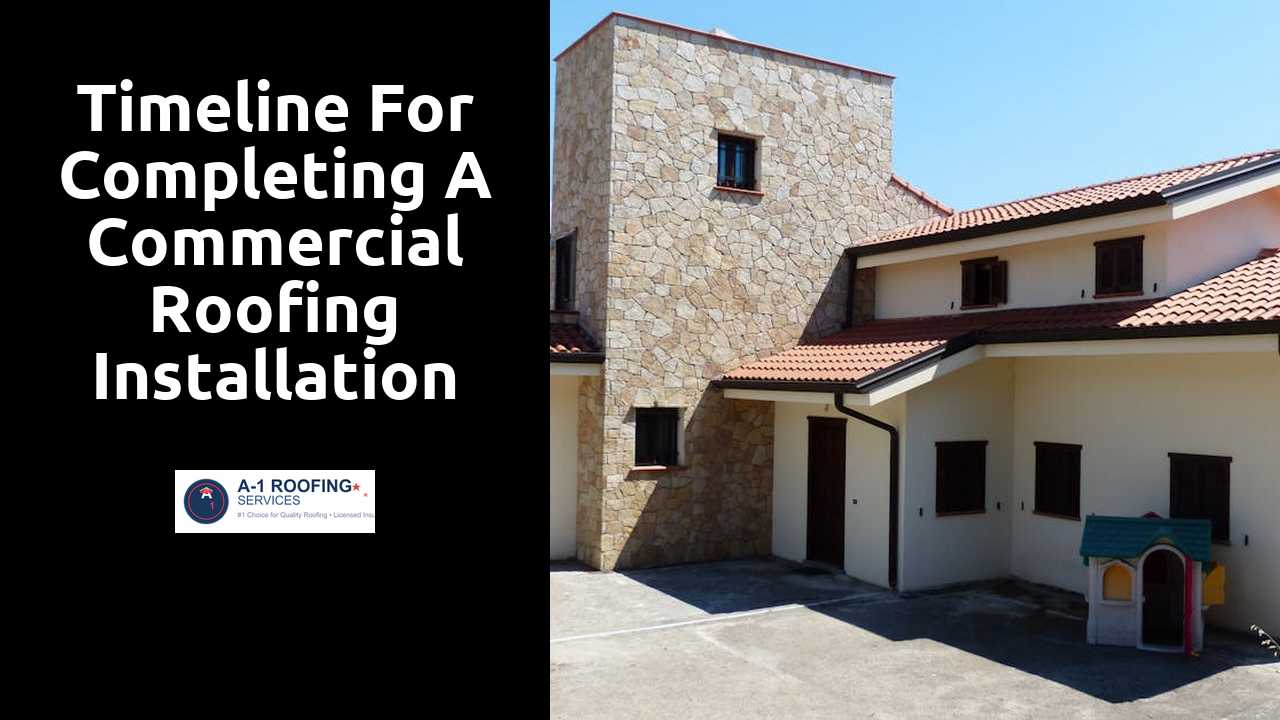
Timeline for Completing a Commercial Roofing Installation Project
Table Of Contents
Team Preparation and Training
Effective preparation is essential for any roofing project. Team members must undergo training to ensure they are familiar with the specific materials and techniques required for the installation. This process can include hands-on workshops, safety drills, and even certifications related to the roofing systems being used. Equipping the team with knowledge about equipment operation and hazard management fosters a culture of safety and competency on the job.
In addition to technical training, promoting clear communication among team members is crucial. Establishing roles and responsibilities prevents confusion and encourages accountability. Regular meetings prior to the project can help align everyone's expectations and provide an opportunity to address potential challenges. A well-prepared team is better equipped to respond to unforeseen issues, ensuring a smoother progression during the installation phases.
Check out this site for more information.
Ensuring Safety and Efficiency on the Jobsite
Creating a safe job site begins with thorough training sessions for all crew members. Workers must be familiar with safety protocols, including proper use of personal protective equipment (PPE) such as helmets, harnesses, and gloves. Ensuring everyone understands the importance of these measures contributes to an overall culture of safety. Regular safety meetings can reinforce these policies and allow team members to voice any concerns.
Efficiency in operations is closely tied to the organization of the job site. A well-structured workspace minimizes unnecessary movement and maximizes productivity. Using designated storage areas for materials and tools reduces search time and potential hazards. Effective communication among team members further enhances workflow, allowing for swift adjustments to any challenges that may arise during the installation process.
Installation Phases Explained
Installation of a commercial roofing system involves several distinct phases that ensure both durability and performance. The first phase typically begins with thorough site preparation, which includes clearing the area and ensuring the existing structure is sound. This step is crucial to maintain safety during the entire project. Following preparation, the next focus shifts to the installation of the underlayment and insulation. These materials play a significant role in energy efficiency and moisture control.
Once the underlayment and insulation are in place, the roofing material is installed. Depending on the type of roof being constructed, this could involve various techniques, such as layering membrane sheets or applying shingles. Each roofing system requires specific installation methods to maintain warranty standards and longevity. After the roofing material is laid, the final phase includes detailed flashing and drainage solutions to avert potential water intrusion issues. This meticulous process is vital for ensuring the roof performs optimally under different weather conditions.
Breaking Down the Steps of Installation
The installation process for a commercial roofing project typically begins with a thorough inspection of the existing roof structure. This assessment helps identify any underlying issues that need to be addressed before proceeding. Proper documentation of the roof's condition is important for planning and ensuring compliance with safety regulations. Once the evaluation is complete, the team can gather all necessary materials, tools, and equipment required for the specific roofing system being installed.
Following the preparation phase, the actual installation starts with laying down the appropriate underlayment. This layer acts as a protective barrier against moisture and can drastically impact the longevity of the roofing system. Subsequent steps involve the installation of roofing materials, which must be meticulously aligned and secured. Each section of the roof is handled with care to maintain structural integrity while ensuring that all materials meet the necessary quality standards. Continuous monitoring during this phase is crucial to address any unforeseen challenges promptly.
Quality Control Measures
During a commercial roofing installation project, maintaining high standards of quality is essential. Inspections should be scheduled at various points throughout the installation process. These evaluations help identify any potential issues early, ensuring that the work aligns with industry standards and client expectations. By addressing concerns proactively, teams can minimize rework and enhance overall project efficiency.
Quality control measures also involve documentation of inspections and corrective actions taken. This practice not only provides accountability but also serves as a valuable resource for future projects. Keeping detailed records helps in assessing the effectiveness of techniques and materials used. Continuous improvement becomes possible when lessons learned are analyzed and integrated into subsequent installations.
Inspections Throughout the Process
Regular inspections play a crucial role in maintaining the quality of a commercial roofing installation project. By conducting these checks at significant points throughout the installation, teams can identify potential issues early on. This proactive approach helps prevent costly repairs later and ensures that the work aligns with project specifications and safety regulations.
During inspections, various elements of the installation are evaluated. This includes checking the integrity of materials, confirming proper installation techniques, and ensuring adherence to manufacturer guidelines. Addressing any discrepancies immediately reduces the risk of future complications and enhances the overall durability of the roof.
Related Links
Understanding Building Codes for Commercial Roof InstallationSafety Protocols During Commercial Roofing Installation